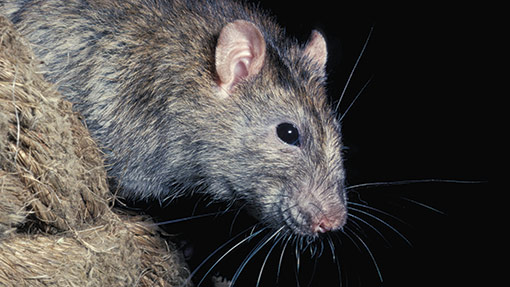Prepare your farm to control rat plague this winter

This winter is looking to be a bumper rat season and livestock farmers are being urged to put early measures in place to avoid costly infestations, resulting in spoiled feed and silage bales.
Following one of the mildest winters on record and excellent summer breeding conditions with high food availability in the field, farmers need to target early control, says BASF rural hygiene specialist Gavin Wood.
He adds that numbers this season will have been bolstered by large numbers of rats staying outside over much – if not all – of last winter.
See also: Top 10 ways to control rats on farm
“Long experience teaches us that mild winters and warm summers with relatively few signs of rats around farm buildings are often followed by upsurges in infestations as soon as the weather turns cold or wet the following winter,” he says.
Outwintering
“Staying outside last winter, many rats escaped farm control to continue breeding in relative security. Add to this highly favourable summer breeding conditions and, although largely unseen in hedges, ditches and woodland, populations will be going into this winter far higher than normal.
“All it will take is a brief interruption to their external food supply and the annual migration into buildings will be sudden and dramatic.
“Fail to tackle this influx rapidly and effectively from the outset and you’ll be in for a long, hard – and very costly – winter of fighting rats on all fronts,” he warns.
Under these conditions, the key factors to successful control are a high level of vigilance, low tolerance and first-class baiting.
Vigilance
“Keep a disciplined look out for signs of rat activity the whole time,” he advises.
“Rat runs along the sides of buildings, droppings and gnawing damage aren’t hard to spot if you know what to look for and focus your attention on high-risk areas around grain and feed stores, in particular.
“Start baiting immediately when you see any signs of activity, bait wherever you see it and, above all, use a top-quality rodenticide that maximises the speed and reliability of consumption.”
Combined with prompt, early treatment, Mr Wood stresses that quality baiting will ensure the highest degree of control in the shortest possible time, pointing to studies showing populations reliably knocked back to a level at which they can only re-establish from new individuals moving into the vacated territory.
